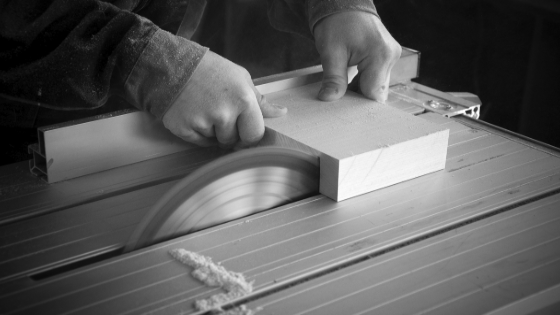Changes to Wood Dust Exposure Limits
All workplaces involved with wood processing need to control employee exposure to wood dust. If not controlled using appropriate measures, wood dust can be a significant risk to health – in both the short and longer terms. Regulations are in place to ensure these workplaces provide safe and healthy working environments. However, the ‘exposure limits’ associated with these regulations are set to be lowered in January 2020. Many businesses will have to act now in order to comply with the lower limit.
Lowering the Limits
The limit for exposure to both hard and soft wood dust currently stands at 5mg/m³ (as of August 2019). However, the limit for hard wood and mixed wood dust exposure is set to be reduced to 3mg/m³ in January 2020. This in response to the growing understanding of the risks of exposure. This 40% limit reduction will be an unprecedented change in the law. Adapting to these changes by January 2020 will represent a major challenge for many businesses. So why are the wood dust exposure limits being lowered so drastically?
The Risks of Exposure to Wood Dust
There are many health risks associated with wood dust exposure, and some are much more serious than others.
Skin Conditions
Exposure to wood dust can result in allergic reactions and skin conditions such as dermatitis. Whilst not representing a serious threat to human health, these conditions can cause significant irritation and even pain. These problems can be quickly exacerbated with continued exposure to wood dust or lack of treatment.
Respiratory Problems
Asthma is an example of a potential effect of exposure to wood dust in the short term. However, more serious conditions can quickly develop, including lung disease. Such conditions can permanently damage the lungs and may cause further health complications.
Carcinogenic
Hard wood dust has long been recognised to have carcinogenic properties. However, research has shown that the cancer-causing risk of exposure is greater than previously realised. In particular, the research has shown that long-term exposure to relatively small amounts of wood dust correlates with a much higher risk of cancer in later life. As a result, the UK government’s Health and Safety Executive (HSE) is implementing new exposure limits. It is therefore essential for businesses to implement effective control measures in advance of January 2020.
How to Prepare for January 2020
Monitor Current Exposure Levels
In order to make sure your business is prepared for the upcoming changes to wood dust exposure limits, you first need to understand your current level of risk. Dust exposure monitoring shows the current level of wood dust exposure in your business. The results of this monitoring will indicate whether or not you are in line with the impending change. However, it should be noted that the exposure limits are – indeed – ‘limits’; you should constantly strive to reduce exposure levels as much as practicably possible.
Install or Upgrade LEV
Aside from avoiding exposure to wood dust altogether, Local Exhaust Ventilation (LEV) represents the most effective method of control. However, it is vital to ensure the equipment is appropriate to its intended purpose, and that its effectiveness is continually monitored.
Use PPE
Although LEV can be very effective on its own, you will most likely need to use Personal Protective Equipment (PPE) to further minimise your employees’ exposure. It should be noted though that PPE is a last line of defence as it only protects that worker.
Future Enforcements
The 2020 3mg/m³ limit for hard and mixed wood exposure is set to be further reduced to 2mg/m³ in January 2023. Although January 2020 naturally represents the most pressing concern for businesses, it is worth thinking about the steps you will need to take to reduce them to be in line with the 2023 limits. After all, your staff’s health is paramount.
We’re here to help
If you need any help or advice, we’re happy to assist. Our experienced occupational hygienists have many years experience covering a wide range of industries. We can carry our air monitoring to assess the exposure levels, give advice on any control measures and provide recommendations to help you comply with the COSHH Regulations and the new limits.
Our approach
Get in touch with Workplace Exposure, either give us a call on 0800 689 4386, or fill in our enquiry form to discuss your monitoring or consultancy requirements.
We’ll then provide you with a no obligation proposal, we can often give an initial idea of fees whilst we discuss your needs.
Once you’ve accepted our proposal we can then schedule the work.
Following our site visit we’ll provide you with a comprehensive report giving you advice, recommendations and control measures where appropriate.
Implement the outcomes for compliance and a happier healthier workplace.
